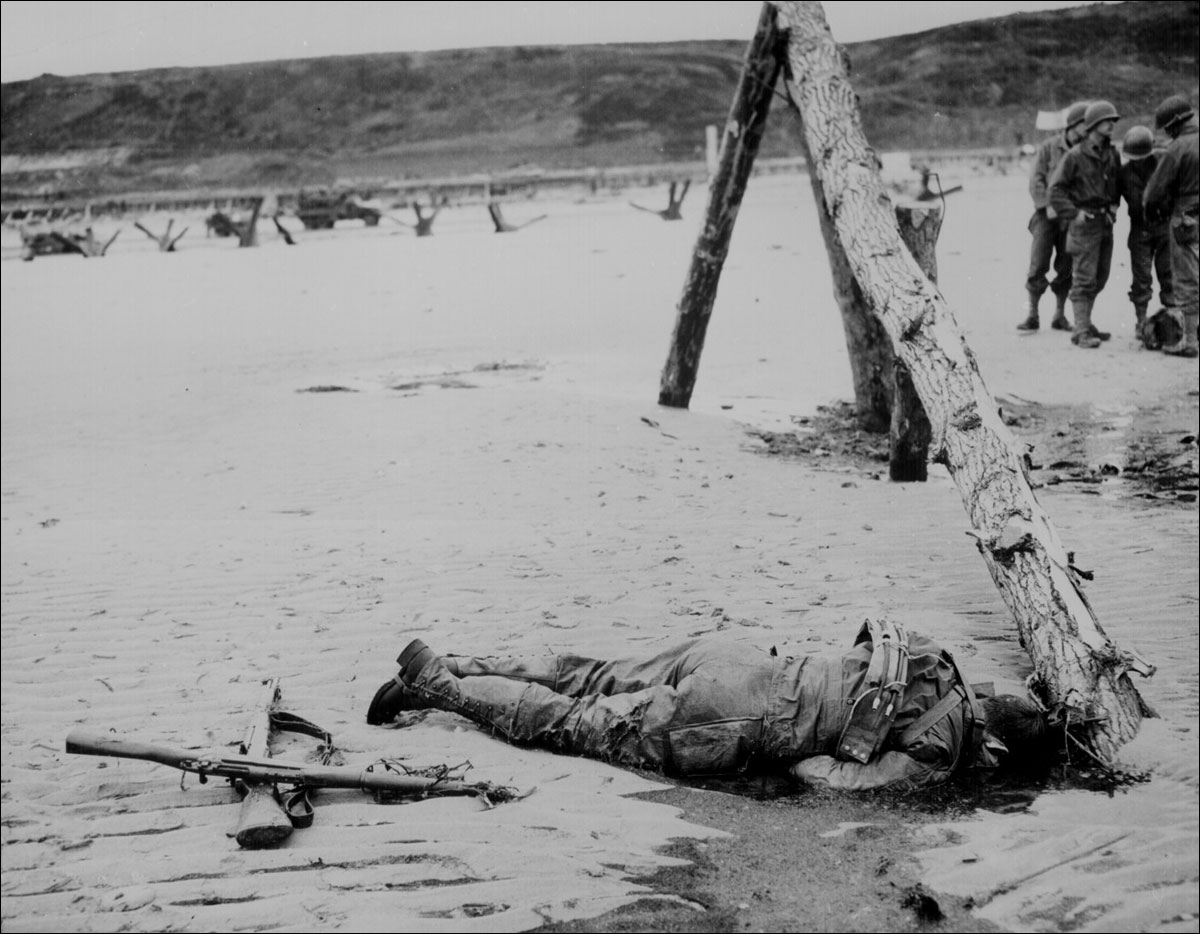Buried in Paper:
The D-Day Documents
Part 6: Failures and Lessons
Introduction

Crossed rifles in the sand are a comrade's tribute to this American soldier, still wearing his flotation belt, who lies next to an onstacle planted by German defenders to defeat landing craft.
In the aftermath of the invasion, the Army spent a lot of time analyzing its successes and failures. And there were plenty of failures.
In fact, it's almost a miracle that the invasion succeeded. One officer, writing after the fact, renamed Operation Neptune "Operation Nightmare."
There was greater resistance than predicted; strong currents scattered the landing craft as much a mile off target; landing craft stopped in deep water and the men, weighed down by their 70-pound packs, stepped into water over their heads and drowned; special tanks—called DD (or "Duplex Drive") tanks—designed to swim ashore and fight on the beach sank in rough water; thousands of rockets that were launched at the beach to create foxholes in the sand landed harmlessly in the water; aircraft tasked with bombing beach defenses held off dropping their bombs by a few seconds and missed their targets; and many doctors and corpsmen rode to the beach on a single ship, which was sunk by gunfire.
It's a testament to the courage of those seasick, overloaded men who made it to the beach that the Germans were pushed back.
On the following pages are excerpts from reports describing what went wrong.
In the first excerpt, Captain Charles R. Clark of the 16th Infantry Regiment reports that evacuating the dead and wounded was difficult because some small boat skippers were reluctant to come under fire. "There were a number of cases where the wounded were carried through chest-deep water to within a few feet of the (evacuation) craft, when the skipper pulled up the ramp and took to sea," he wrote.